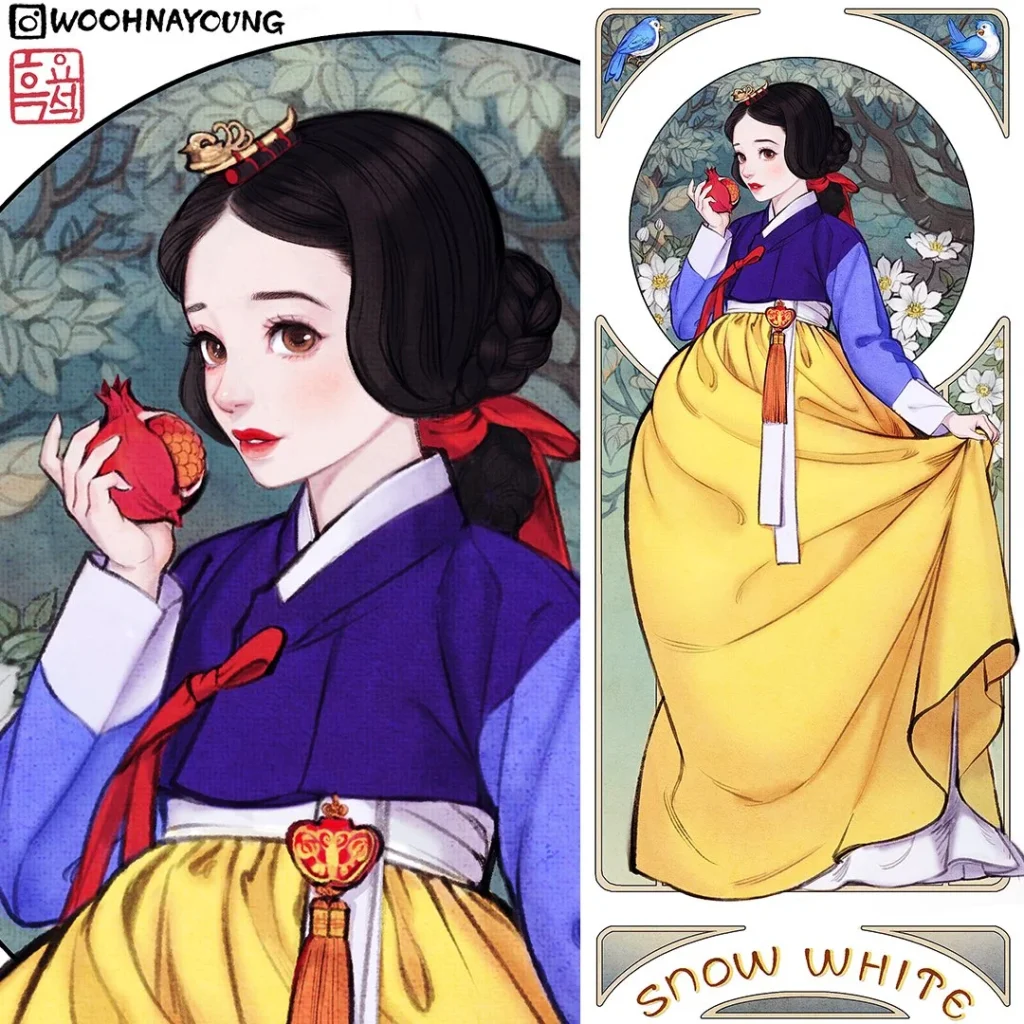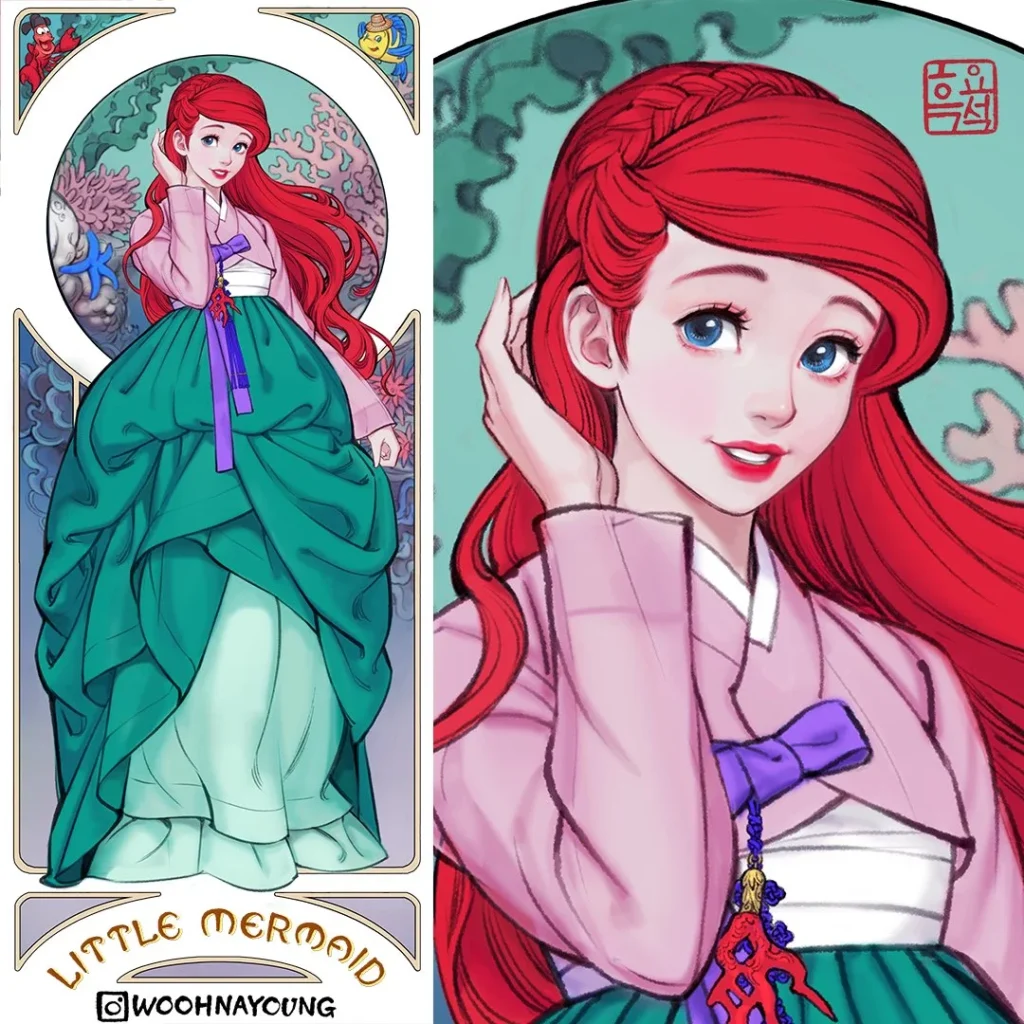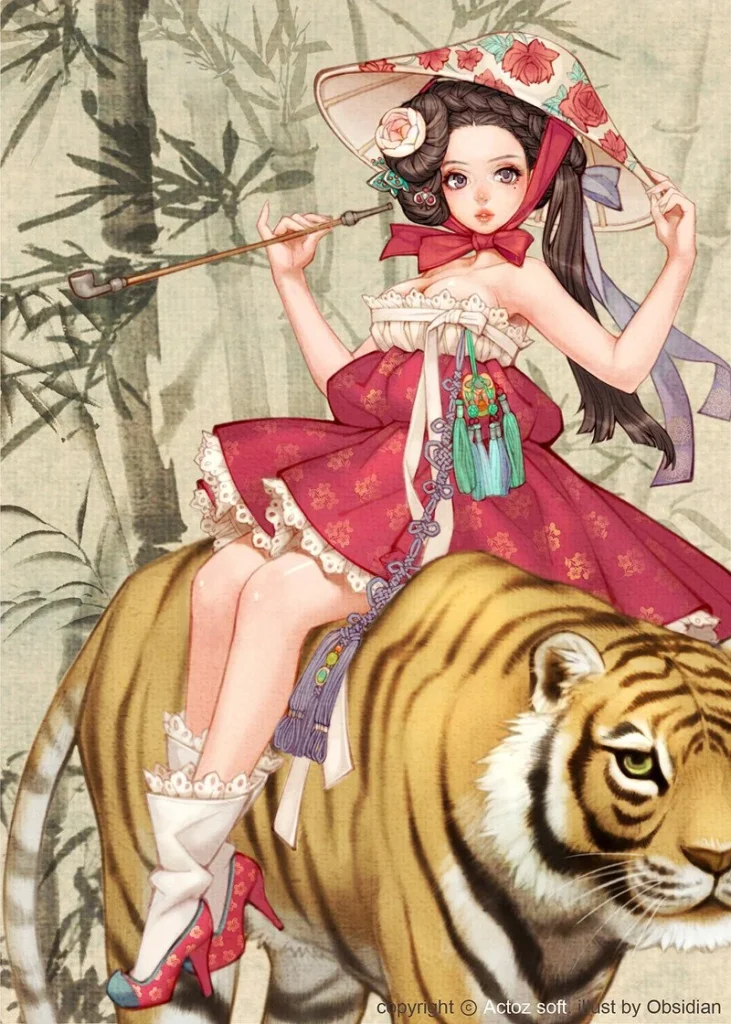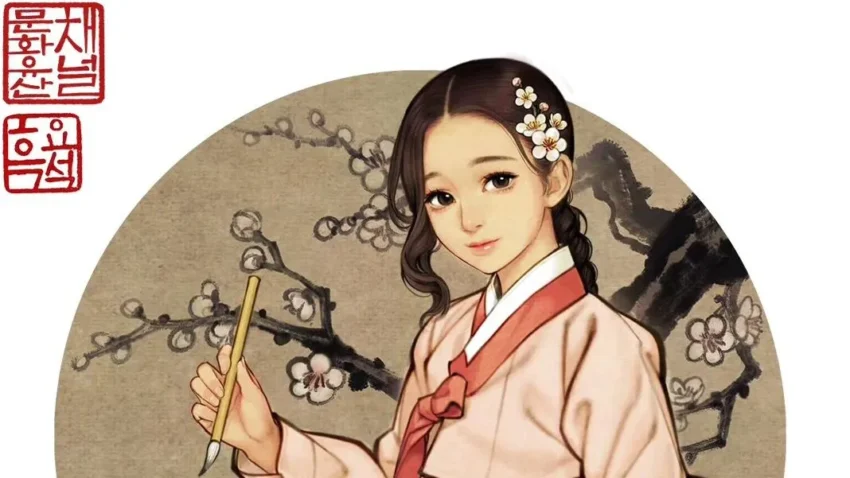The Hanbok illustration debate highlights the tension between artistic expression and cultural preservation. Some artists are hesitant to depict Hanbok due to fear of criticism, potentially leading to cultural rigidity. The debate encompasses various topics like animal welfare and anti-Japanese sentiment, prompting discussions on Hanbok’s dynamic nature and diverse cultural interpretations. Through open dialogue and mutual understanding, we can strike a balance between artistic expression and cultural preservation, ensuring Hanbok’s vitality.
The Illustrator’s Dilemma
In the realm of online art communities, a recent discussion surrounding Hanbok illustrations has sparked a heated debate. An illustrator, well-versed in Korean culture, expressed their reluctance to depict Hanbok, citing the fear of facing criticism from self-proclaimed cultural guardians. Their apprehension stems from the potential backlash they might receive for either misrepresenting traditional elements or portraying the garment in a manner deemed inappropriate. This reluctance to explore Hanbok as an artistic subject highlights the delicate balance between artistic expression and cultural preservation.
Navigating the Minefield of Criticism


The illustrator’s concerns are not unfounded. In the past, artists like Wooh Na-young, the creator of the “Western Fairy Tales in Korea” series, have faced criticism for their creative interpretations of Hanbok. Her fusion of Korean traditional attire with Western characters and settings, while applauded by some for its innovative approach, drew ire from others who perceived it as a distortion of cultural heritage.
The “Eo Woodong” Incident

Another notable example is the case of illustrator Heuk Yo-seok, better known as Obsidian. His depiction of the popular “Eo Woodong” characters clad in Hanbok sparked a torrent of criticism, ranging from historical inaccuracies to perceived sexualization. The incident underscores the complexities of portraying Hanbok in a way that satisfies both artistic sensibilities and cultural expectations.
The Instiz Forum Debate
The Hanbok illustration debate gained further traction on the popular Korean online forum Instiz. Users expressed frustration with the prevalence of online critics who scrutinize Hanbok depictions, often prioritizing historical accuracy over artistic freedom. They argued that these self-appointed cultural gatekeepers often lack the expertise or understanding of the artists’ creative intentions.
The Animal Welfare Controversy
Adding another layer to the debate was the issue of animal welfare. A particular illustration featuring a character riding a tiger sparked accusations of animal abuse, despite the fictional nature of the scene. This incident highlights the intersection of cultural symbolism and ethical considerations, particularly in the context of portraying animals in art.
The Anti-Japanese Sentiment Factor
The debate took an unexpected turn when the topic of anti-Japanese sentiment emerged. Some argued that the tiger, traditionally revered as a guardian spirit in Korean culture, should not be depicted in a frivolous manner, especially given its historical association with Japanese exploitation. This argument reflects the complex interplay between cultural identity, historical trauma, and artistic expression.
The Counterarguments
However, others countered that the tiger’s status as a revered symbol should not hinder its artistic representation. They argued that the tiger’s portrayal in the illustration was not disrespectful but rather a reflection of its cultural significance. This counterargument highlights the importance of contextualizing artistic expressions within their cultural framework.
The Instiz Forum’s Limitations
The Instiz forum debate ultimately reached an impasse, with both sides entrenched in their respective viewpoints. This outcome reflects the limitations of online forums as platforms for nuanced discussions, often conducive to echo chambers and polarized opinions.
The Evolving Nature of Hanbok
The debate surrounding Hanbok illustrations underscores the dynamic nature of cultural heritage. Hanbok, like any cultural artifact, has evolved over time, adapting to changing social norms and artistic trends. Embracing this evolution is crucial for ensuring the vitality of cultural traditions, allowing them to resonate with contemporary audiences.
Conclusion
The Hanbok illustration debate serves as a reminder of the delicate balance between artistic expression and cultural preservation. While respecting cultural heritage is essential, it should not stifle creative exploration. Striking this balance requires open dialogue, mutual understanding, and a willingness to engage with diverse interpretations of cultural symbols. Only then can we ensure that Hanbok remains a vibrant and dynamic element of Korean culture, inspiring artists and captivating audiences for generations to come.
I appreciate you taking the time to read this post. Please share your thoughts in the comments!


Hanbok is Korean traditional clothes. It’s not chinese things!
It’s not hanfu It’s HanBok!!!